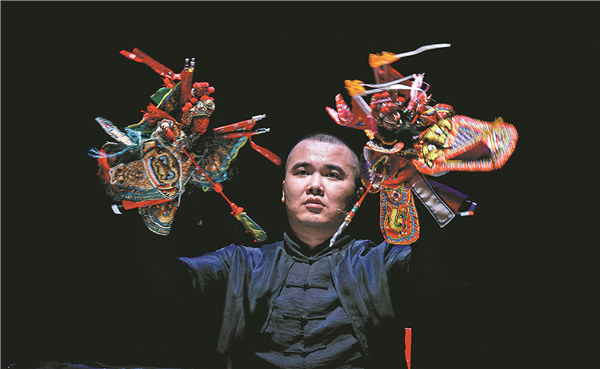

Beginning his journey
Hong was born and raised in Dongshi town in Jinjiang, Quanzhou, a city in East China's Fujian province, a major hub for string puppetry. According to the Quanzhou government website, the history of string puppetry dates back to the Han Dynasty (206 BC-AD 220) and came to Quanzhou during the Tang Dynasty (618-907).
In Fujian, puppet shows were traditionally performed at various life events such as weddings and funerals, becoming an integral part of local customs.
"Each puppet is equipped with 16 to 32 strings, with the most complex having over 40. The strings are divided into several groups according to human movements, and all action is controlled solely by the puppeteers' hands," the article says. "Combined with exquisite head carvings, embroidered costumes and craftsmanship, Quanzhou's string puppetry boasts an extraordinarily intricate artistic system."
Hong's journey in puppetry began with nanyin, a musical art with slow, simple melodies performed on distinctive instruments like the dongxiao (bamboo flute) and the pipa (four-stringed Chinese lute).As a middle school student, he joined a nanyin class after school, and a year later, his teacher recommended that he study at the Quanzhou Art School, where he was drawn to the puppet class. The class needed male students, so he switched, beginning his journey in puppetry.
"My parents were open-minded about my choice, so I fully devoted myself to what I love," says Hong, whose family runs a seafood business.
His days at the art school were dull and monotonous, with repetitive practice sessions on finger techniques, vocal exercises and memorizing songs. As a teenager, these were not particularly pleasant memories. One summer, he was invited to the home of puppetry master Lin Wenrong. Lin taught generously, providing food and accommodation, and Hong stayed until the end of the training program. Lin, skilled in both puppetry performance and puppet-making, taught Hong how to make and assemble puppets while Hong learned head carving on his own.
One year later, Lin fell ill and had difficulty walking. Hong carried his teacher down the stairs daily to see the doctor and back up to their home. While Lin received treatment, Hong spent time at a nearby embroidery shop, learning the art of embroidery for puppet costumes.
Though he received traditional puppetry training, Hong has a different perspective on the old art form. Lin once mentioned the old puppet show Mulian Saves His Mother, which was performed for 7 days and nights.